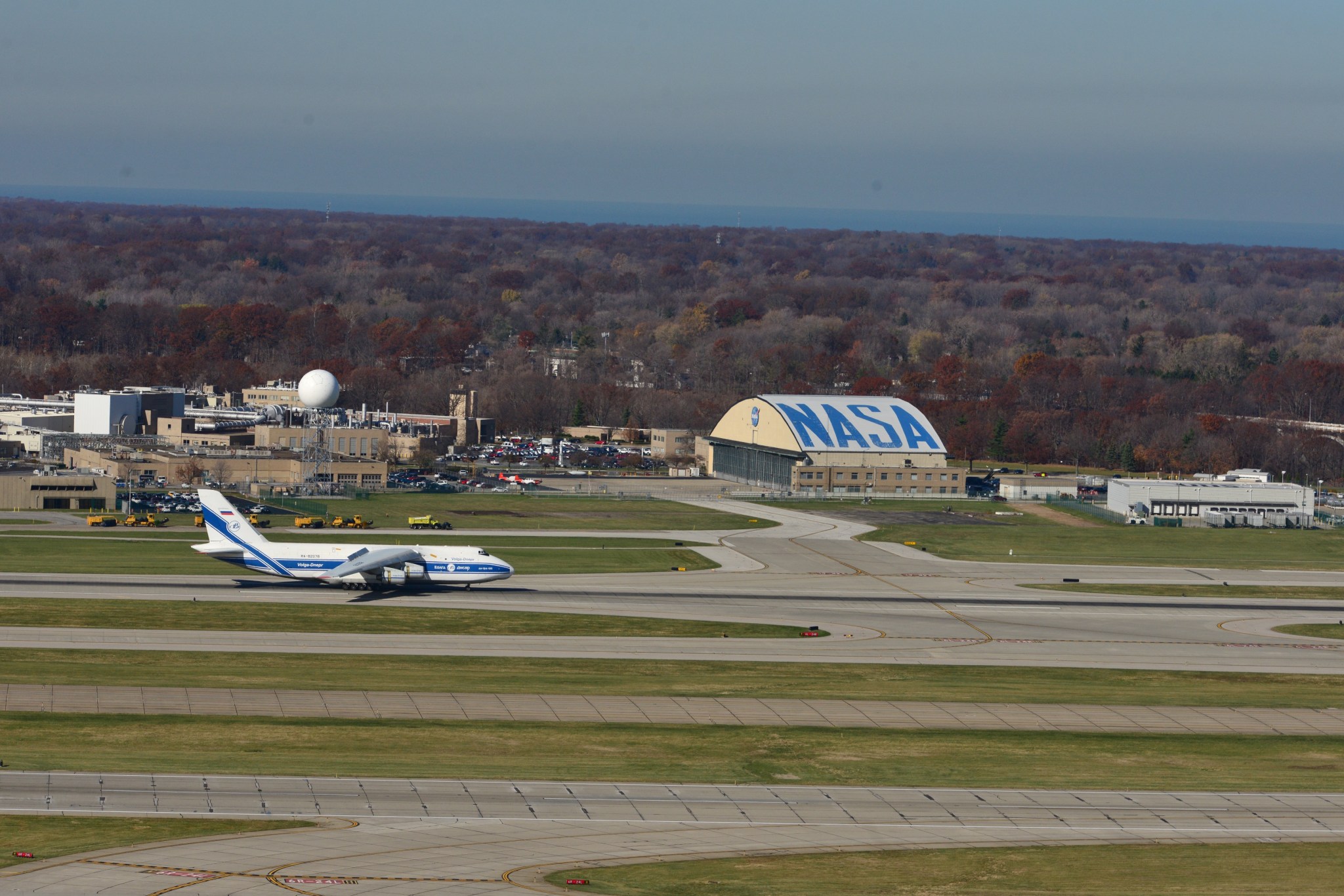A critical component that will enable humans to explore deep space in NASA’s Orion spacecraft arrived to Cleveland, Ohio, on Monday on one of the world’s largest aircraft. A full-size test version of Orion’s service module, provided by ESA (European Space Agency), was delivered to Cleveland Hopkins Airport on an Antonov AN-124.
The service module provides in-space propulsion, power, air and water for astronauts. It will facilitate continued international cooperation on the journey to Mars.
“ESA and their prime contractor Airbus are providing an essential part of Orion that will help us conduct our next mission in the lunar proving ground,” said Mark Kirasich, Orion Program manager. “The service module is Orion’s powerhouse, and our work with the Europeans builds on an already strong relationship as we explore farther into the solar system than a spacecraft built for humans has ever traveled.”
The test article will be transported by truck this week to NASA Glenn Research Center’s Plum Brook Station in Sandusky, Ohio, where it will undergo testing to ensure the service module can withstand the trip to space.
“We were thrilled to see the European test article arrive in Cleveland today, and we’re looking forward to putting it through the paces at Plum Brook Station,” said Glenn Center Director Jim Free. “This test campaign is an important step in ensuring Orion’s success as it moves toward its first mission.”
Over the next several months, test engineers will use a large vibration table and acoustic chamber at Plum Brook’s Space Power Facility to mimic the shaking and noise the service module will experience during its ascent into space. They also will conduct a solar array deployment test and use pyrotechnics to simulate the shock the service module will experience during separation from the Space Launch System rocket, which will send Orion on its mission. The testing allows engineers to validate engineering analysis and make sure flight hardware will perform to NASA’s safety and flight requirements.
The Orion spacecraft is being developed to send astronauts to deep space destinations, such as an asteroid placed in lunar orbit and Mars, and will launch on the agency’s SLS rocket from a modernized spaceport at the agency’s Kennedy Space Center in Florida.
Plum Brook Station is home to some of the largest testing structures in the world, including the powerful space environment simulation facilities and vacuum chamber. Also at Plum Brook is the world’s most powerful spacecraft acoustic test chamber, and the world’s highest capacity and most powerful spacecraft vibration table.
For more information about NASA’s Orion spacecraft, visit:
To learn more about the world-class test facilities at NASA’s Plum Brook Station, visit:
-end-
Jan Wittry
Glenn Research Center, Cleveland
216-433-5466
jan.m.wittry-1@nasa.gov
Kathryn Hambleton
Headquarters, Washington
202-358-1100
kathryn.hambleton@nasa.gov
Rachel Kraft
Johnson Space Center, Houston
281-483-5111
rachel.h.kraft@nasa.gov



























